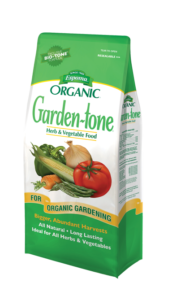Drum roll please! The start of planting season is here!
After long weeks spent pouring over seed catalogs and admiring Pinterest gardens, it’s time to finally create the garden of your dreams.
If you started seeds a few weeks ago, it’s time to gradually move them outside. And if you didn’t, a trip to your local garden center awaits you.
So now that you’re ready, let’s plant your soon-to-be flourishing garden.
How to know if your garden is ready for planting:
To see if the ground is thawed and warm enough for planting, dig 3-4” deep. Grab a handful of soil and roll into a ball. If the soil won’t take shape, it’s too hard and dry for new plants.
If you can make a ball, drop it to the ground. If it breaks, your soil is ready. If the ball stays together, your soil is too wet, so try again in a few days.
Now comes the fun part, deciding what to plant!
Roses, snapdragons and pansies are some of our favorite flowers to plant in early spring. Plus, they add a pop of color when you need it most.
As far as veggies go; plant peas, spinach, kale, lettuce, broccoli, carrots and onions in early spring. Imagine how much you’ll save on groceries in the upcoming months!
Before you buy your new plants, check the plant tags to make sure you have enough space and sun.
Now time to plant:
If planting a flower bed, mix 4 lbs. (12 cups) of Bio-tone Starter Plus, an organic plant food, per 100 square feet into the top 4-6” of soil.
Adding all-natural, organic plant food enhanced with bacteria is the secret to bigger, better plants of all kinds.
Bio-tone Starter Plus is like a protein shake for your plants. This organic plant food is jam-packed with microbes and mycorrhizae to provide an instant health boost.
Seriously, the proof is in the plants.
Bio tone Starter Plus gives plants everything they need to grow bigger blooms faster. So, you’ll lose fewer plants along the way. You can also add Bio tone when planting bulbs, container gardens, shrubs and even trees. Using this organic plant food on veggies and fruits is a-ok since it’s all natural.
Now, get digging! You can plant in individual holes or a garden bed. Either way, dig holes as deep as the containers the plants came in, and check the plant tag to see how far apart to plant.
Remove plants from containers; loosen roots and pop ‘em in the hole!
Then, replace the soil around the plants and water.
Finally, add the finishing touch of 2-3” mulch — if you haven’t already.
What are you planting this spring? Comment below or better yet, share a picture on our Facebook page!



